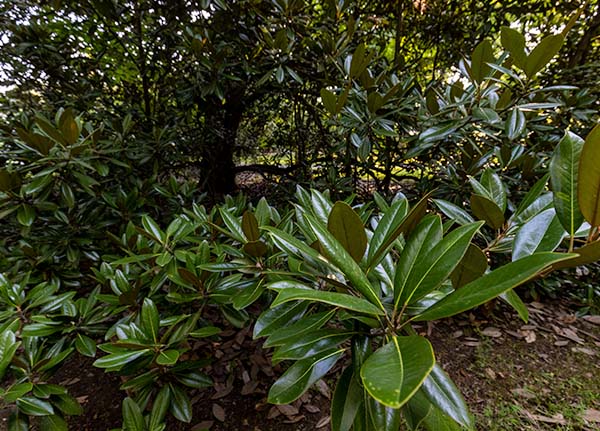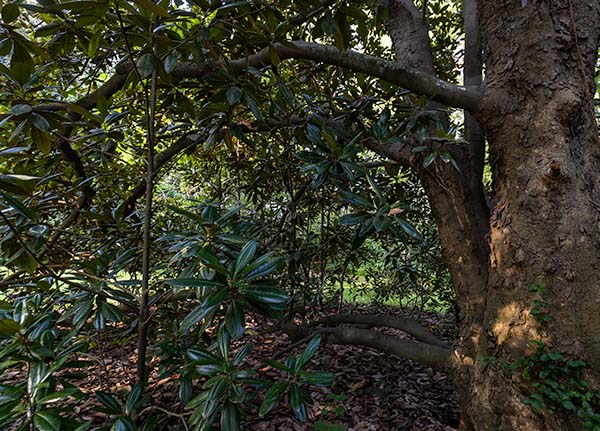The Woodland
Animals navigate the maze of trees; bacteria and fungi thrive in the soil and decomposing leaf litter; understory plants compete for limited sunlight that filters through the giants above. At the heart of the forest, creating the architecture for all, are the trees.
The Woodland is a representation of a temperate deciduous forest biome, specifically an Oak-Hickory forest, found across the Eastern United States. This forest type contains an array of different species, outside of oak and hickory; our four-acre area alone hosts an abundance of dogwood, cherry, boxelder, sassafras, persimmon, ash, and pawpaw. Growing underneath you’ll find jewelweed, mayapple, and ferns accented by the spring bloom of phlox, trillium, bluebells, and other ephemeral wildflowers.
This area was established in 1961 by the Memphis Area Wildflower Society as a sanctuary for a group of native plants that were destined to be destroyed by road construction. Although the society no longer exists, volunteers continue to play a crucial role in the conservation of native plants, which serve forest ecosystems by enriching biodiversity. Our effort to conserve native plants extends to the removal of exotic and invasive species, which often outcompete natives for nutrients, space, and sunlight. Native plants are critical to the continued survival of natural forests as we know them, so their protection is a top priority. See how many different species you can spot as you walk through this example of the forests that once dominated the landscape of west Tennessee.
Just past this area, you’ll find the Magnolia Grove featuring the Southern Magnolia and other natives along with a large collection of Asian varieties planted along The Woodland edge.


Magnolia
Grove
Southern Magnolias are a staple of the southern landscape and are known for their beautiful white flowers and striking fragrance. Our magnolia collection features over 300 trees of at least six different species and many more cultivars. Magnolias can range from fifteen-foot shrubs to trees reaching 80 feet or more.
The well-known native Southern Magnolia (Magnolia grandiflora) has evergreen, leathery leaves and blooms in early summer. There are many lesser-known, but equally interesting, Asian species, including the Star Magnolia (M. stellata), the Yulan Magnolia (M. denudata), and the stunning Saucer Magnolia hybrids (Magnolia x soulangeana), all of which are deciduous and bloom earlier in the spring. These Asian varieties do well here in the Mid-South because our climate is very similar to their native growing conditions. You’ll also find two native deciduous varieties, the Bigleaf Magnolia (M. macrophylla) and Cucumber Magnolia (M. acuminata) growing here.
Magnolias were one of the first flowering plants on earth and are typically pollinated by beetles, not bees. The flowers produce a cone-like fruit that is a food source for many birds. No matter what season you visit, you’ll find something of interest in these grand trees.
750 Cherry Road
Memphis, TN 38117
(901) 636-4100
Central Daylight Time Hours:
9 am-6 pm
Central Standard Time (Winter) Hours:
9 am-4:30 pm